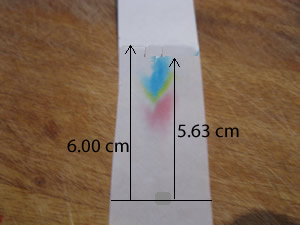You can also try this technique at home using food dye.
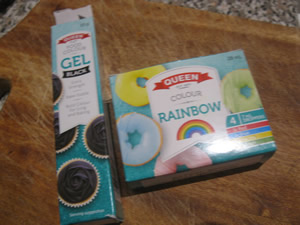
Cut a 10 cm long and 2 cm wide strip of paper. Newspaper is good for this but you can also use other types of paper.
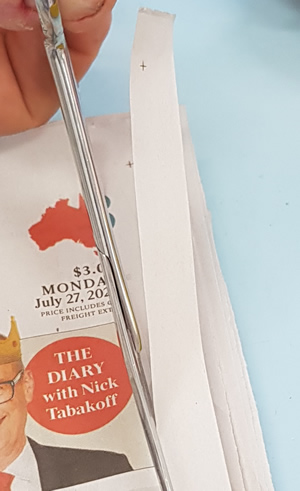
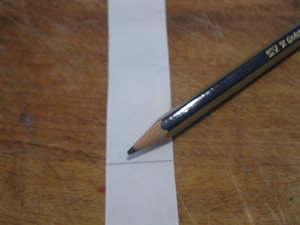


Remove the paper from the water when the water has stopped at its maximum height or is 2 cm from the top of the paper.
Now time to take a few measurements using a ruler.
Step 1 - measure the height the water reached.

Step 2 - measure the height each dye particle reached.
Step 3 - divide the height of the dye particle by the height of the water. This will give a number called the Rf.
In this case the yellow dye particles reached
a height of 5 cm while the water reached a height of 8 cm.
Rf = 5 / 8 = 0.625.
Since both the yellow particles have the same Rf we can conclude they are the same particle.
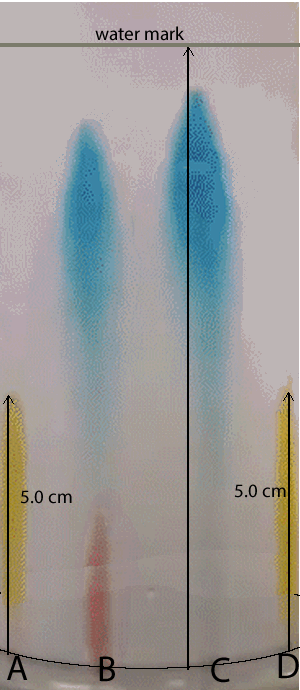
Now consider the dyes B and C. Both contain blue particles.
a) Are the blue particles the same type? Explain
b) Is dye B a mixture or a pure substance? Explain
c) Explain why the red particles in dye B travel less up the paper than the blue particles of dye B?
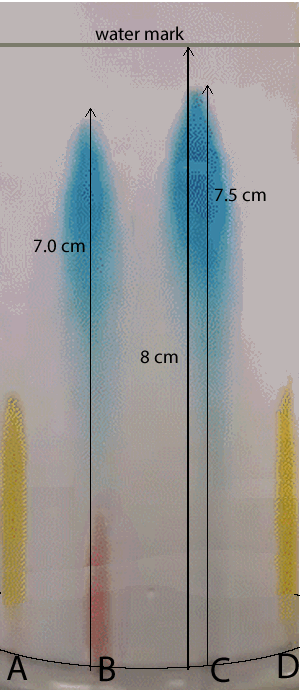
Another dye was analysed using paper chromatography. The paper is shown on the right after it was taken out of the water. Are the blue particles used in this dye the same as the blue particle used in dye B above? Explain.
What are primary colours?
This dye appears to be
, the original colour of the dye must have been
